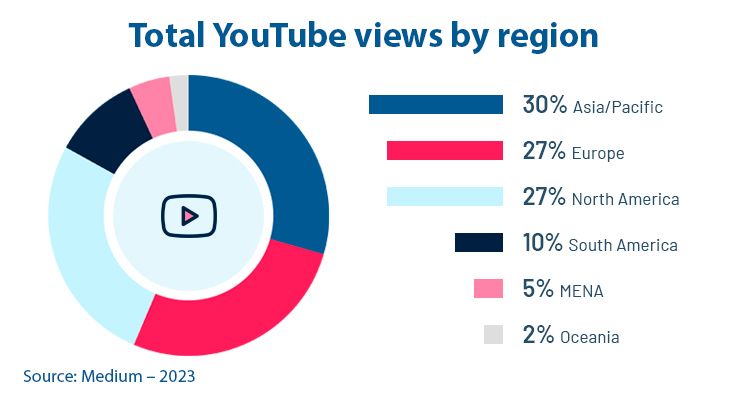
Broadcasting rights have always been highly valued in the sports audiovisual industry. There was even a time when these rights considered players like YouTube to be a threat since users could upload images or videos of sporting events without permission, bypassing official channels and threatening streaming revenue.
Today the situation is very different. YouTube’s massive reach is seen as an opportunity, especially among younger and digitally native audiences. Live streaming and digital highlights are just as important as linear broadcasts and many people not only search for sports content online, but go to YouTube as their default destination, because it is already integrated into interfaces on smart TVs.
Identifying this opportunity, Google responded by creating a dedicated business unit and developing a range of easy-to-use tools that allow rights holders to control, monetize and protect their sports content. Seasoned sports TV executive Rob Pilgrim, Head of Sport & Primetime Channels, EMEA at YouTube.
The streaming giant’s strategy in the region is based on three pillars, as Pilgrim recently commented, the first is partnerships, the second is productions, and the third is innovations.
‘Part of our team is focused on generating new partnerships, whether with consumer product brands, large content providers and even personalities in the segment. We also have a team that seeks to promote new productions or see how to generate co-productions with large players, and finally, our innovation team, who have been developing powerful tools for our commercial clients, as well as for our content providers,’ commented Pilgrim.

One of the focuses of YouTube in Europe is the promotion of Connected TV, this is because its AVOD data has shown that the young generation continues to drive engagement with the content on the service, and this has been transferred to smart televisions.
‘More than 66% of Generation Z consume television and connected television. It is the great opportunity that we found, not only in the sports segment, but in all types of content whose rights we acquire for the platform,’ he said.
The executive highlighted that the presence of YouTube on televisions is still something ‘new’ for them, which is why they continue to enhance their interface and even develop tools to end streaming fatigue.
Among the tools that Google has been promoting to complement YouTube is Google Trends, the classic tool that everyone can use publicly, and which has now been complemented with the streamer to see how many people are searching for a particular word or phrase and thus facilitate the search. of some content.
YouTube has been making progress in FAST channels, according to the executive, but where they have been truly innovative is in the aggregation of prime channels and linear content. In fact, in the region, Google is an innovator in this area, where it is the only player that allows pay TV services to operate freely through YouTube. ‘This was one of the great advances we achieved in the region. Be flexible with content providers and offer facilities for the audience. Under this business model we all win: suppliers, producers, and advertising clients.
Where YouTube has gained ground is in the sports segment, allying itself with strong regional players. To its credit it has a historic agreement with Sky Sports for the Premier League, also with Formula 1, NFL, the Tokyo 2020 Olympic Games, among others.
Finally, one of the reasons why the streamer is being so influential is because of the protection of its content. All videos uploaded to the platform are protected by ‘Content ID’, software that can detect copyright infringements,’ Pilgrim explained.
‘We have this really impressive system that can use machine learning to fingerprint a video, understand what’s in it, and then search YouTube and find other copies of that video,’ he said. ‘From this moment on, it is the decision of the rights holder. They can delete it, monetize it or track the data it contains’.

